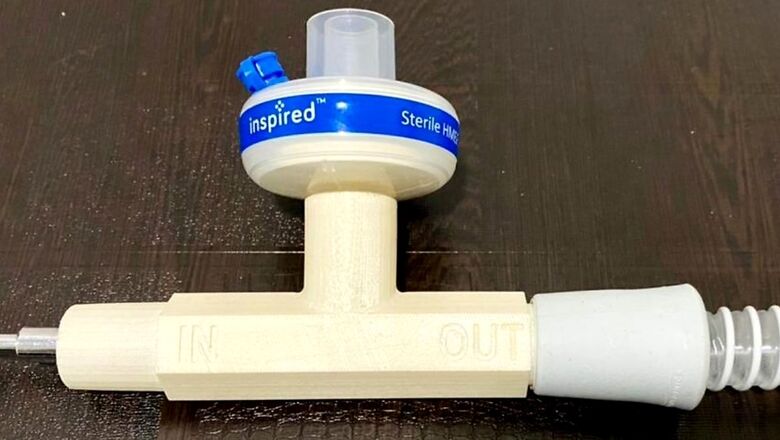
views
The Indian Institute of Technology (IIT) Ropar has developed a 3D printed, powerless, device ‘Jivan Vayu’ that can deliver high flow oxygen, 20-60 LPM while maintaining a continuous positive pressure of up to 20 cm H2O, resulting in a low cost and accessible CPAP therapy.
With the Covid-19 virus, those using medical equipment such as oxygen concentrators and ventilators, steady power supply is a key concern. The World Health Organization (WHO) recommends the use of HFNO (High Flow Nasal Oxygen), NIPPV (Non-invasive Positive Pressure Ventilation) and CPAP/BiPAP (Continuous/Bilevel Positive Airway Pressure) oxygen therapies.
The existing CPAP machines especially in the early stages of the Covid-19 infection reduce lung damage and allow patients to recover from the inflammatory effects. CPAP machines use mild air pressure to keep a patient’s airways open to avoid the collapse of airways but it requires power. Patients may suffocate in their sleep, if there is a power outage.
The device can be used through normal oxygen cylinder or main oxygen line, to provide an accelerated flow rate without electricity. “During summer, the electricity demand increases, and the distribution system, which is already fragile or not robustly built, gets overloaded, and power supply is interrupted. Rural India is likely to be the worst affected, with government data showing that nearly 39,000 health sub-centres in rural India functioning without electricity supply,” IIT Ropar said in a press release.
The ‘Jivan Vayu’ device features a viral filter to ensure the entrained air does not bring in any pathogens from the environment. The design specifications have been modeled to optimise an accelerated flow of up to 60 LPM, from an oxygen cylinder.
The device is designed for a 22mm CPAP closed circuit and can also be customised. The IN end of device needs to be attached to the oxygen supply e.g. oxygen cylinder through a nozzle/adapter.
The device has been tested mechanically and developed at the ‘Advanced Materials and Design Lab’ led by Dr Khushboo Rakha, Assistant Professor, Metallurgical and Materials Engineering. The team collaborated with Suresh Chand, Faculty In charge, Rapid Prototyping Lab, Siemens Centre of Excellence at Punjab Engineering College, Chandigarh for 3D printing of the device.
Read all the Latest News, Breaking News and Coronavirus News here.



















Comments
0 comment